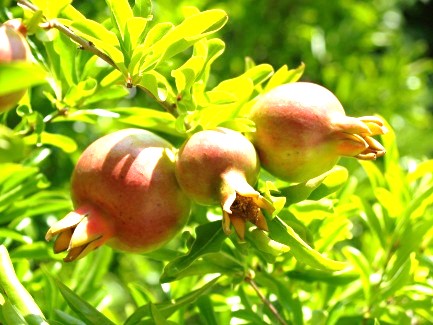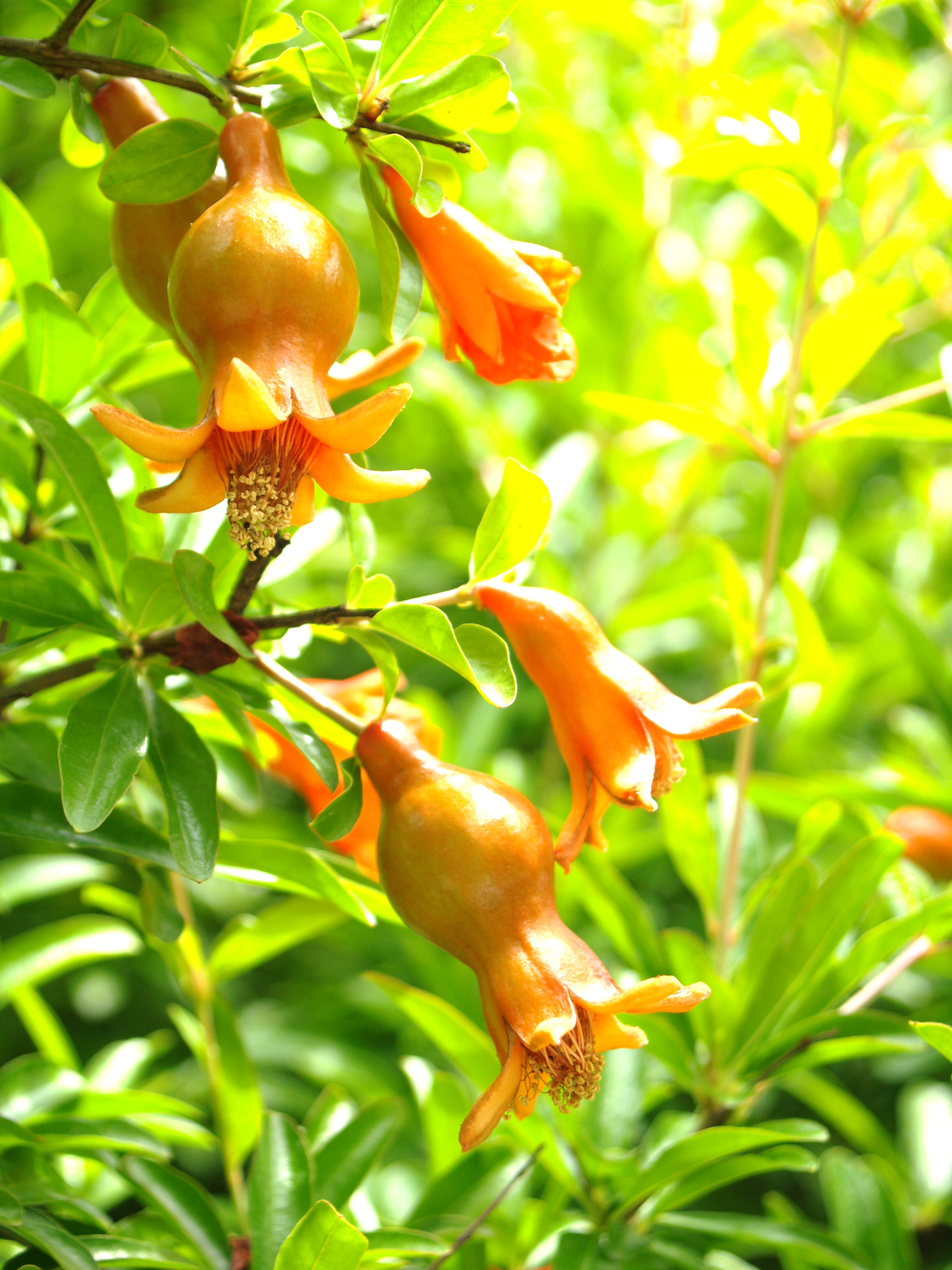
Pomegranate
Punica granatum
Family and description
From the Punica genus and Punicaceae family, the Pomegranate is a deciduous shrub or small tree, which can reach a height of up to 5 m.
It has brownish-gray branches, the youngest of quadrangular section. The wild specimens have thorns on the branches.
The leaves are glossy green, opposite, simple and oblong.
Flowering occurs between May and September and the dark orange flowers (sometimes white) occur in groups of one to three. The flowers are hermaphrodites, that is, they have both male and female sexes.
The pomegranate fruit, is of complex structure, spherical, coriaceous and crowned by chalice teeth. It is internally compartmentalized by membranes that house numerous prismatic seeds surrounded by a fleshy, edible pulp of intense transparent pink and a sweet flavour.
Origin and habitat
This plant originated in the Eastern Mediterranean and the Himalayas, extending from there to the Mediterranean. In Portugal it is mainly cultivated south of the Tagus, where it is also found in the wild, in forests and hedgerows of horticultural fields. Grown in full sun or half shade and resistant to dryness, it tolerates various types of soil.
Uses and curiosities
The pomegranate was cultivated in ancient times by the Phoenicians, Greeks and Egyptians. The importance of its fruit, the pomegranate, is millenarian, appearing in biblical texts associated with passion and fecundity and also considered by the Greeks as a symbol of love and fecundity. The pomegranate tree was consecrated to the goddess Aphrodite, for it was believed to have aphrodisiac powers. For the Jews, it is a religious symbol with deep meaning in the ritual of the New Year. There are also reports of its presence in King Solomon’s gardens. In Rome, the pomegranate was used in ceremonies and worship, considered as a symbol of order, wealth and fecundity. In the Middle Ages the pomegranate was often considered a courteous and sanguine fruit, appearing in the tales and fables of many countries.
Pomegranates contain antioxidants, useful in combating heart disease and aging. Branches, flowers and fruit are rich in tannins and have been used as astringents and tanning agents. The root is used as an intestinal dewormer.
It is a resistant plant, rarely affected by pests or diseases. Propagation is done by seeds and cuttings.

